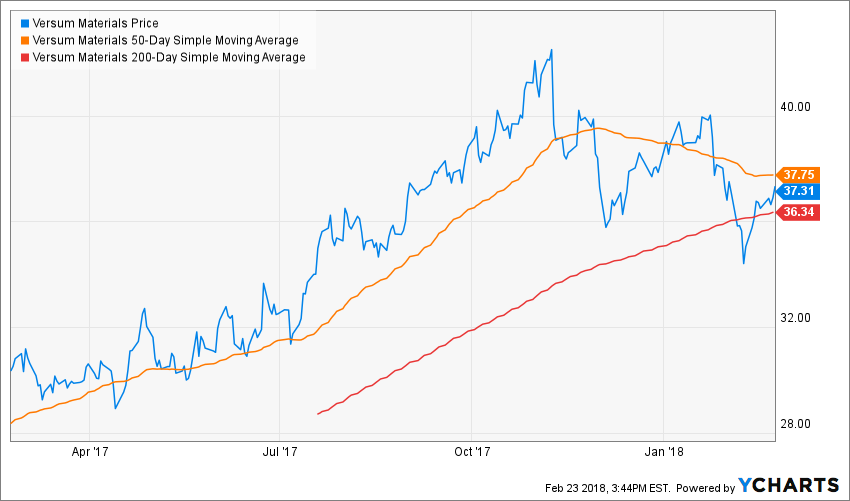Investors should think smaller. The secret is the little things, inside the big idea. For next-generation wireless to become a reality, evolutionary silicon is needed. Look at Versum Materials (VSM), writes Jon Markman, editor of The Power Elite and Tech Trend Trader.
The future of the internet began Feb. 22. That’s when Falcon 9, the reusable SpaceX rocket, blasted into space. On Tuesday SpaceX reached another milestone, launching its 50th rocket.
Elon Musk’s rocket company gets a lot of good press. Rightfully so. Rockets capable of reaching Mars, and pinpoint vertical landings are cool. They are also expensive.
Musk plans to foot the bill with globe-covering, space-age Internet.
It seems crazy. The goal is to launch a constellation of inexpensive satellites called Starlink. These Low Earth Orbit beacons would beam coordinated signals back to Earth from 210 miles and 750 miles away using the Ka and Ku frequency bands.
SpaceX launched the first two of 12,000 planned satellites in late February.
In theory, a system of this size could blanket the entire planet in high-speed internet connectivity. The use cases would be extraordinary. Internet service providers might beam signals directly into homes, negating the need for costly fiber optic lines. Wireless carriers could offer subscribers worldwide, unlimited voice and data connectivity without lost signals, or roaming charges.
Low latency would make smart cities, and driverless and connected cars, reality.
In the past, satellite internet has been about very costly devices parked very far away from Earth in geostationary orbit. Mostly rural subscribers got a dish they attached to their roof to catch the signal. It worked, but latency — because the satellites were so far away — made live-streaming video a nightmare. Inclement weather could knock out the signal.
Numerous LEO devices, coupled with machine learning, would remedy these ailments with nearness, and the ability to bounce the signal around storms.
In late 2014, Musk approached Alphabet (GOOGL) with his big idea. At the time, the search giant was in the process of building out Google Fiber, an optical fiber high-speed service. A year earlier, it spent $500 million to acquire Skybox Imaging, a maker of high-resolution geostationary satellites.
Starlink is perfectly Google. It is cutting-edge. It relies on machine learning. It is in the early stages. And it could bring high-speed internet to the entire planet.
Just imagine the opportunity to serve ads and collect data.
In 2015, The New York Times reported Alphabet and Fidelity Investments committed $1 billion to SpaceX to develop Starlink. The deal effectively gave the pair a 10% stake in the rocket company.
Since that time, Alphabet has shown its hand. It sold its satellite business to Planet Labs. It slowed investment in optical fiber and bought Webpass, a point-to-point, gigabit wireless internet provider.
The internet’s future is wireless, beamed from thousands of LEO satellites.
There is plenty of competition. Sir Richard Branson, the jet-setting British entrepreneur, teamed with Qualcomm (QCOM) to back OneWeb. That group, working with Airbus, plans to build a constellation of 648 satellites for internet connectivity. Other teams, led by Boeing (BA), Telesat and Space Norway, have plans in development.
For investors, the opportunity may not be immediately apparent.
SpaceX is not a public company. And Musk, ever the visionary, is more interested in liquid oxygen, rocket-grade kerosene flumes and Mars settlements. Internet beamed from space is a means to that end.
In January, The Wall Street Journal reported SpaceX internal files showed its internet service is projected to earn $15 billion in profits annually by 2025.
Investors should think smaller. The secret is the little things, inside the big idea. Here’s just one example …

For next-generation wireless to become a reality, evolutionary silicon is required. I have been telling my members to look at Versum Materials (VSM). The Arizona company makes the specialty chemicals and devices that semiconductor firms use to build state-of-the-art microprocessors.
Its customers range from Intel (INTC) to Samsung, and every company in between. New processors have Versum in their DNA.
Business is good. Sales grew 16.2% in 2017. All the key managers are in their middle 50s, with plenty of experience in cultivating relationships within the sector.
Plus, the stock has recently pulled back to the 200-day moving average.
It is in the right place for the next big idea. Internet beamed from space looks like that idea.
Best wishes,
Jon D. Markman
Subscribe to Jon Markman’s Power Elite newsletter here
Subscribe to Jon Markman’s Tech Trend Trader here
Subscribe to Jon Markman’s Strategic Advantage here





















